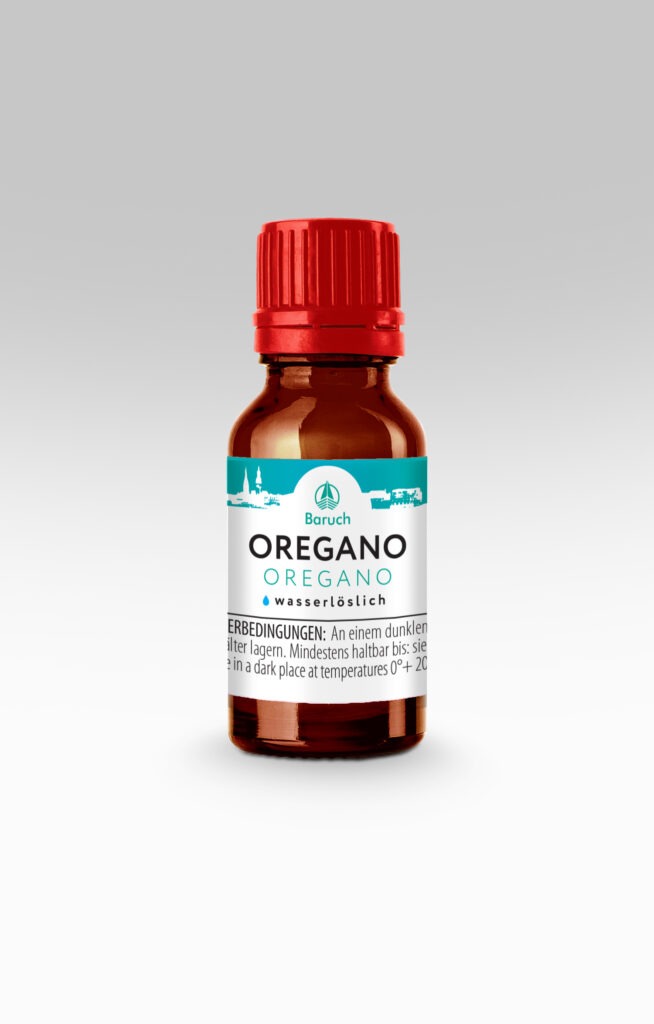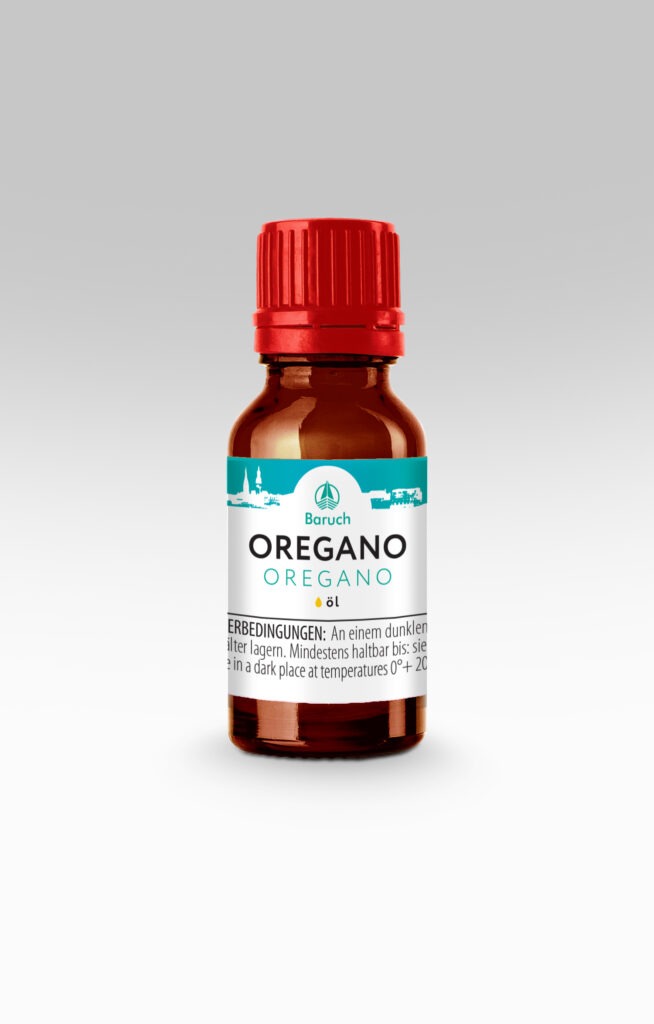The name oregano comes from the Greek and can be roughly translated as “shiny mountain”. Oregano is widespread in the Mediterranean countries and the territory of Russia, with the exception of the North and the Far East. Oregano leaves have an astringent, bitter-spicy taste and a peculiar, slightly citrus-like aroma. CO2 extract from oregano is an oily liquid of golden brown color with a pronounced aroma with notes of camphor. The taste is oily, tart, sharp and spicy.
According to the publications available, it can be argued that in cooking it is recommended to use it for seasoning meat dishes, pizza, soups, mushroom dishes, pickles, tea, beer and kvass, as well as liqueurs and tinctures. Bread rolls, gingerbread and flatbread are baked with oregano. Oregano leaves are a great addition to salads. Oregano is very widely used in the making of jams, syrups, and jellies. Oregano is brewed and drunk as a tea substitute. Also used to infuse vodka. Most commonly used as a condiment in Italian cuisine.
Like its essential oil, oregano CO2 extract has a number of proven beneficial properties. It protects liver cells from damage, activates the gall bladder, and has antibacterial, antiseptic and antiviral effects. Recommended as an expectorant. In addition, it has been proven that lipophilic compounds in oregano manifest themselves positively in varicose veins, toothache and climatic phenomena. The extract is one of the most active natural antioxidants.
In the course of chromatomass spectrometric investigations, several hundred compounds in the composition of the CO2 extract of oregano were analyzed, of which more than 50 were identified.


Chart 1. The main components of the CO2 extract of oregano
| NAME | CONTENT IN% OF THE AMOUNT OF VOLATILE COMPONENTS | EFFECT |
|---|---|---|
| Timol | 35 | Has an analgesic effect |
| Carvacrol | 10 | Hepatoprotector, anti-inflammatory |
| Germecren-D | 6 | Has a calming effect |
| Caryophyllene-beta | 4 | Has an immunomodulatory effect |
| Ocimene | 2 | Flavor and aromatic compound |
| Sabinene | 2 | Flavor and aromatic combination |
| Geranylacetet | 5 | Part of perfume compositions and food essences |
| Palmitic acid | 12 | Unsaturated fatty acid for waterproofing in cosmetics |
| α- and β-linolenic acid | 6 | Unsaturated. An essential fatty acid from the class of omega-3 fatty acids. It has a membrane protecting, angioprotective effect. Immunomodulatory, improves brain metabolism |
| Linoleic acid | 3 | An essential unsaturated fatty acid of the omega-6 class. It has anti-inflammatory, vasoconstrictor, and aggregating effects. If there is no balance between omega-3 and omega-6 fatty acids, competitive processes can arise that influence the metabolism |
Oregano CO2 extract is recommended as an ingredient in cosmetic products:
- Fight against eczema, dermatitis, head lice, furunculosis
- Elimination of pustular eruptions
- Healing of infected cuts and wounds
- Cleansing and shrinking pores
- Toning all types of skin
- Eliminate excessive sweating
- Eliminate cellulite
- Weight loss
- Care of mature skin
Chart 2. Application rates, recommendations for the use and storage of the CO2 extract of oregano
| Food usage rates | Item А100: 0.001% (10g per ton) Water-soluble microemulsions EMA1: 0.1% (1l per 1000l or 1ml per liter)tem А100: 0.005% (50g per ton) Water-soluble microemulsions EMA1: 0.5% (5l per 1000l or 5ml per liter) |
| Application rates in cosmetics | Item А10: 1-3% Item А100: 0.1-0.3% |
| Recommendations for use | It is recommended to add CO2 extracts in the final stages of preparation, in the cooling phase of the end product. |
| Storage Instructions | Storage advice |
Oregano grows wild in the Caucasus and neighboring countries of the Black and Caspian Seas. Occurrence in southern Europe and the steppe areas of the Caucasus. As a medicinal plant, it is grown everywhere.
Historical reference
In Russia, oregano has been used as a natural preservative and antioxidant since ancient times. Homemade kvass and hop beer were poured onto oregano, which meant that both drinks were better stored and soured more slowly. Milk pots were fumigated with oregano so that the milk in them would no longer be sour. In addition, oregano leaves were often added to the pan when roasting meat – and for good reason, as it was already clear in our day. The substances contained in this plant prevent the formation of carcinogens.
